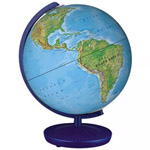Global Integrative Studies, School of

School of Global Integrative Studies: Faculty Publications
Document Type
Article
Date of this Version
5-1-2005
Citation
NORSEC 31 (May 1, 2005)
NORSEC Laboratory Report, number 31 (May 1, 2005)
Gjögur
Also published as: Krivogorskaya, Y., S. Perdikaris, and T. H. McGovern. (2005). Fish bones and Fishermen: The potential of Zooarchaeology in the Westfjords. Archaeologica Islandica 4: 31-51.
Abstract
The date for the onset of full scale commercial fisheries in Iceland remains somewhat controversial, but thus far the earliest radiocarbon dated seasonal fishing station (11th- 13th century) is in NW Iceland’s Strandasýsla County at Akurvík. This paper presents a preliminary report of the ongoing analysis of the large archaeofauna from the farm mound at Gjögur, 3 km from Akurvík, places the site of Gjögur in the wider context of the NW region of Iceland by comparing the site with the Akurvík archaeofauna, and outlines new methodologies of reconstructing live fish size and age based on recovered fish bones. Although the Akurvík site provides a first zooarchaeological look at a Medieval fishing station, it is the site of Gjögur that would have controlled and integrated Akurvík’s catches into the larger regional arena of Northern Iceland, as well as using fishing to aid the economy of Gjögur itself.


Comments
Copyright 2005, the authors. Used by permission.